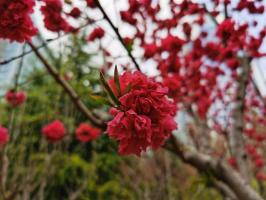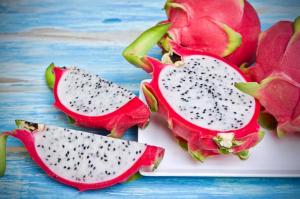Introduction
Tomato plants are a popular choice for gardeners due to their versatility and relatively easy care. However, even the most experienced gardener can encounter problems with their tomato plants, such as curled leaves. In this article, we will explore the reasons why tomato plant leaves curl and provide practical solutions to address this issue.
Pests and Diseases
The most common reason for tomato plant leaves to curl is pests and diseases. If the leaves are curling downward, it may indicate a problem with pests such as spider mites, whiteflies, or aphids. These pests suck the sap from the leaves and cause them to curl and become distorted.
On the other hand, if the leaves are curling upward, it may indicate a disease like tomato mosaic virus. This virus infects the leaves, causing them to curl upwards and become mottled with light and dark green patches. Other diseases like bacterial wilt and fusarium wilt can also cause the leaves to curl and turn yellow before eventually dying.
To prevent pests and diseases from affecting the tomato plant leaves, it is essential to keep the surrounding areas clean and remove any infected leaves immediately. Consider using organic or chemical sprays to keep pests and diseases at bay, or consider companion planting with plants like basil or marigold to deter pests.
Environmental Factors
Another reason why tomato plant leaves curl is environmental factors such as temperature, humidity, and water. When the temperature is too high, and the humidity is low, tomato plants can lose moisture quickly, causing the leaves to curl and appear wilted. Conversely, when the temperature is too low, the leaves may curl for protection against the cold.
Overwatering or underwatering can also cause tomato plant leaves to curl. When the soil is too wet, the roots cannot get enough oxygen, causing water stress and leaf curl. On the other hand, when the soil is too dry, the plant tries to conserve water by curling its leaves inward.
To avoid environmental factors that cause tomato plant leaves to curl, it is critical to check the soil for moisture and water the plant as needed. Maintaining a consistent temperature and humidity level is also essential, especially during the warmer months. In addition, it is crucial to provide adequate shade or cover for the plant during extreme weather conditions like heatwaves or cold snaps.
Nutrient Deficiencies
Tomato plant leaves can also curl due to a lack of nutrients. For example, if the plant is not getting enough calcium, the new growth will be distorted and may experience leaf curling. Similarly, a deficiency in nitrogen, magnesium, or iron can also cause leaf curling and stunted growth.
To address nutrient deficiencies that cause tomato plant leaves to curl, consider using fertilizers with a balanced ratio of nutrients. You can also amend the soil with compost or organic matter to improve soil health and fertility. Finally, it is essential to ensure proper soil pH levels, as some nutrients are only available in specific pH ranges.
Conclusion
In summary, curled tomato plant leaves can be an indication of several underlying issues, including pests and diseases, environmental factors, and nutrient deficiencies. By identifying the root cause of the problem, you can take targeted action to ensure the health and productivity of your tomato plants. Remember to maintain proper soil moisture and fertility, provide adequate shade and cover, and monitor for signs of pests or diseases to prevent curling leaves in your tomato plants.

 how many times do yo...
how many times do yo... how many planted tre...
how many planted tre... how many pine trees ...
how many pine trees ... how many pecan trees...
how many pecan trees... how many plants comp...
how many plants comp... how many plants can ...
how many plants can ... how many plants and ...
how many plants and ... how many pepper plan...
how many pepper plan...





























